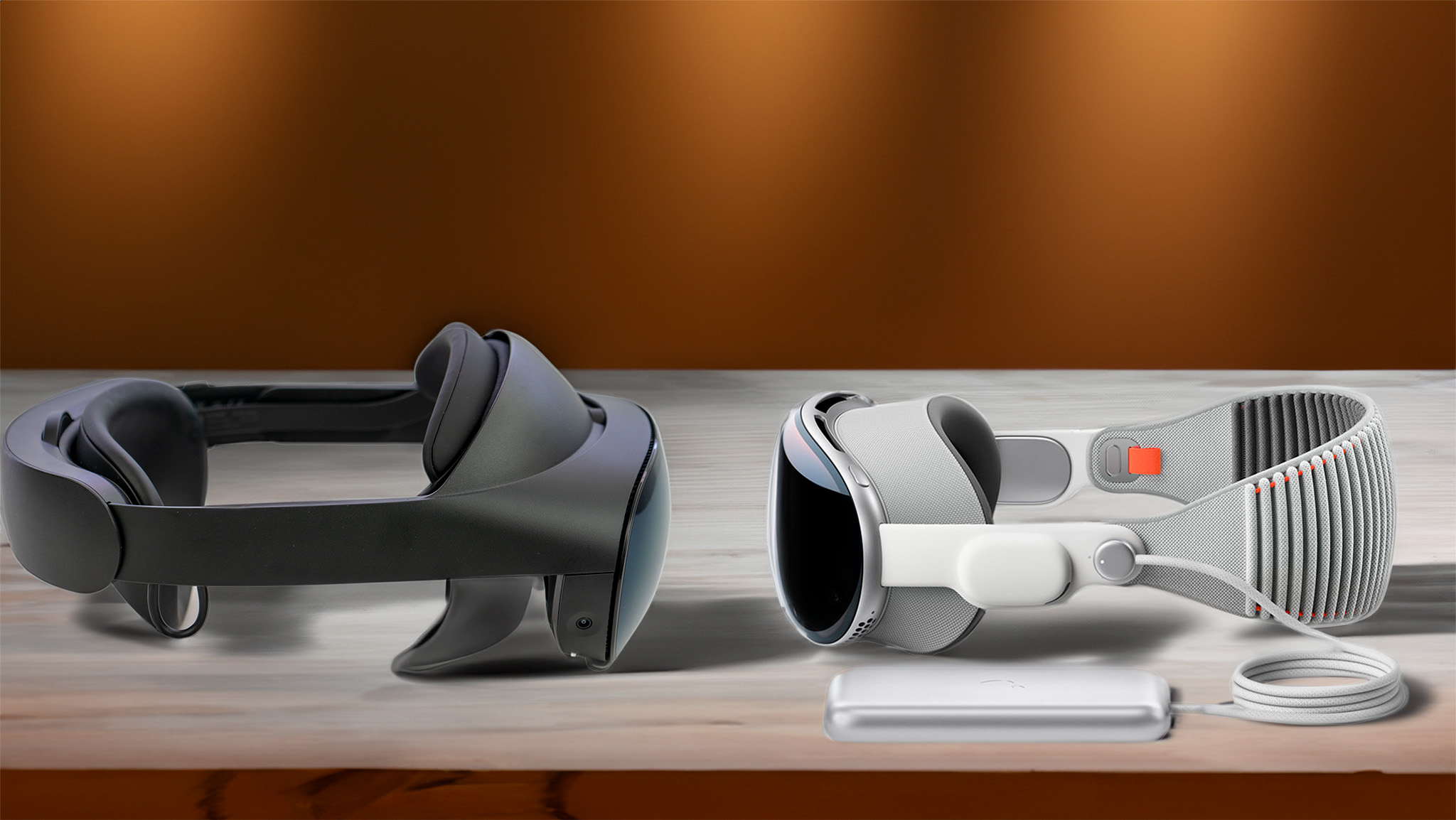
Powerful, but at what cost
Apple's first VR headset is a great pick if you can afford it. This powerful, premium first-gen offering is still pretty new, so if you're willing to tackle its steep price tag, you'll be an early adopter. There aren't as many apps available on it this early on it its life cycle, but the features it does currently have are top-notch.
For
- Premium build quality
- High-powered processing and spatial computing
- Stunning display
Against
- Expensive
- Small library
- Limited features and functionality
- Uncomfortable out of the box
Tried and tested quality
The Meta Quest Pro has years of Meta Quest games to supplement its next-level AR and MR capabilities. While it doesn't scratch the same fidelity as the Vision Pro's best-in-class hand tracking, it still offers many similar features for a fraction of the price.
For
- Better game software
- More supported apps
- Cheaper
- Ships with controllers
- Low-profile and light
- High-quality controllers
Against
- Lower pixel density
- Less powerful
- Worse multitasking
- Worse spatial computing
Both the Apple Vision Pro and the Meta Quest Pro represent the beginning of a new era for VR, AR, and MR hardware and experiences. Where other headsets like the Meta Quest 3, PS VR2, or Valve Index lean on gaming and entertainment-specific form factors, the Quest Pro and Vision Pro both operate in a premium sphere that's more geared towards people looking to incorporate their headset into daily use cases.
Packed full of productivity features and apps, both 'Pro' headsets are built to be lifestyle devices for hardcore technophiles more so than someone looking to play VR games. If you're curious about how the Apple Vision Pro looks compared to a gaming-first headset, check out how it stacks up against the Meta Quest 3, which is our favorite mobile VR headset for gaming.
That's not to say that the Quest Pro doesn't have any games. In fact, it can play all the best Meta Quest games, but it's twice as expensive as the Quest 3 with slower performance, so buying it just to play games isn't worthwhile. That said, having the Quest 2's massive library does give the Quest Pro a leg up in comparison to the Vision Pro.
But don't count the Vision Pro out. With its steep price tag compared to Quest Pro comes a slew of platform and hardware-exclusive features that might sway you in the right direction if you're already paying over a thousand dollars for a headset. Let's break down the differences between the Apple Vision Pro and Meta Quest Pro.
Apple Vision Pro vs Meta Quest Pro: Design
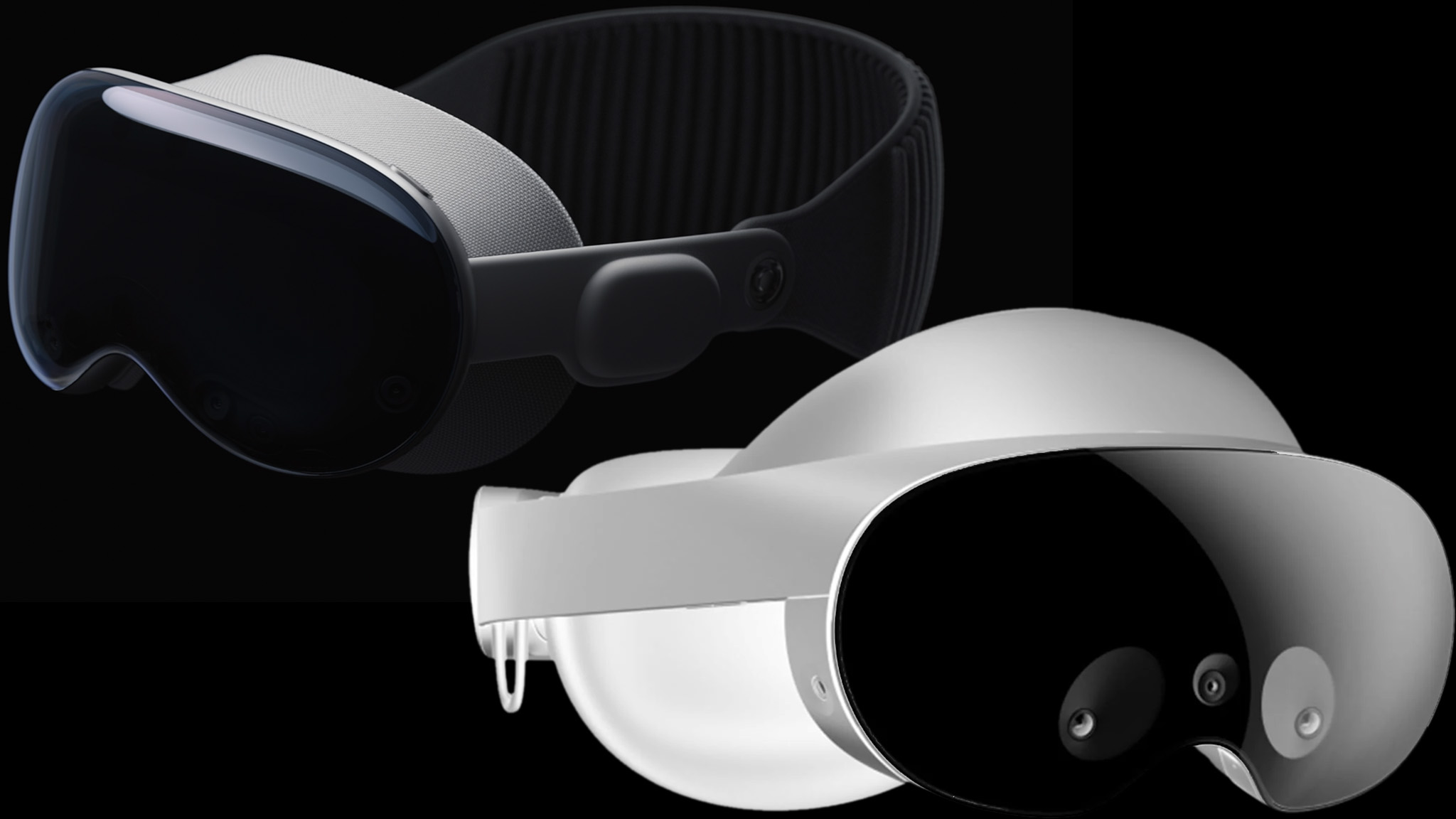
The first thing you'll notice about both 'Pro' headsets is their face. Where other VR headsets boast plastic-faced designs with a handful of cameras, the Quest Pro and Apple Vision Pro both feature glass faces, which help each device capture its environments to enable full-color passthrough.
And, in the case of the Vision Pro, it projects a facsimile of your eyes on the front using EyeSight, which takes advantage of the eye-tracking tech in the Vision Pro. Meta Quest Pro also has eye tracking but mostly uses it for stuff you don't see, like choosing to only fully render objects that are directly in your field of view.
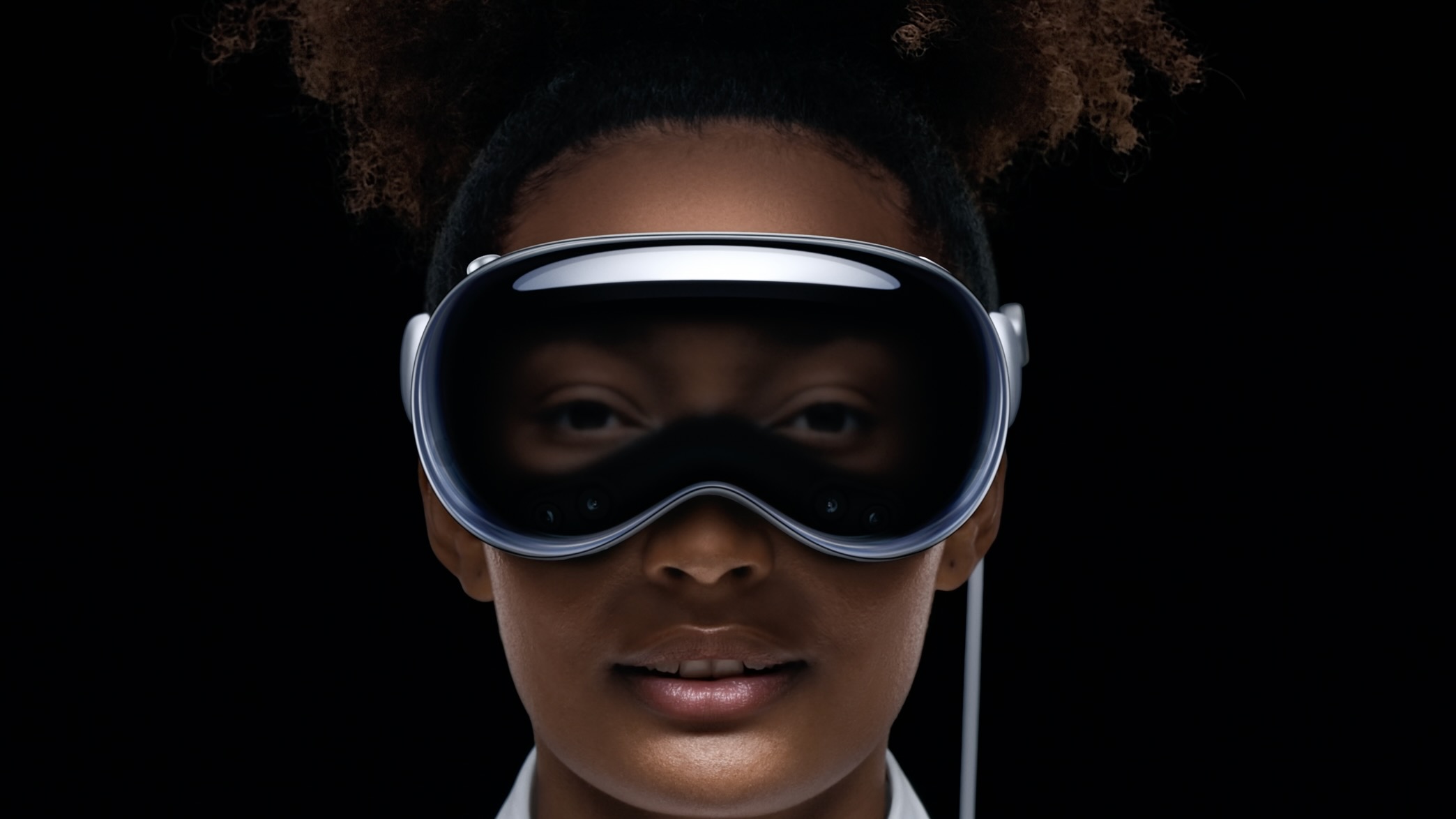
Another thing you'll notice is the halo-style back head strap that both have, which feels less like other VR headsets and more like a high-end pair of ski goggles. The Vision Pro ships with a dual-loop band to help offset the neck and back strain that comes from using the Vision Pro, but there aren't many third-party options available just yet because it's still a relatively new device.
One of the biggest takeaways from our Meta Quest Pro review was just how much more comfortable the Quest Pro is compared to other Meta headsets. Android Central's own Nick Sutrich said, "In a nutshell, Meta took me from 'there's no way I'd wear a VR headset all day' to 'I can't wait to wear this thing on a daily basis.' It really is that comfortable."
That being said, the Quest Pro is heavier than the Vision Pro, with no top strap. In practice, many people complained that the halo strap puts too much pressure on their forehead, and that they don't want to wear one all day.
It's probably a matter of preference, and the Vision Pro has the same issue: Our colleagues at iMore tried the Vision Pro and their first reaction was, "Wow, this thing is heavy." The difference is that Apple uses an external battery pack that you have to wear, whereas Meta keeps the Quest Pro battery packed into the design.
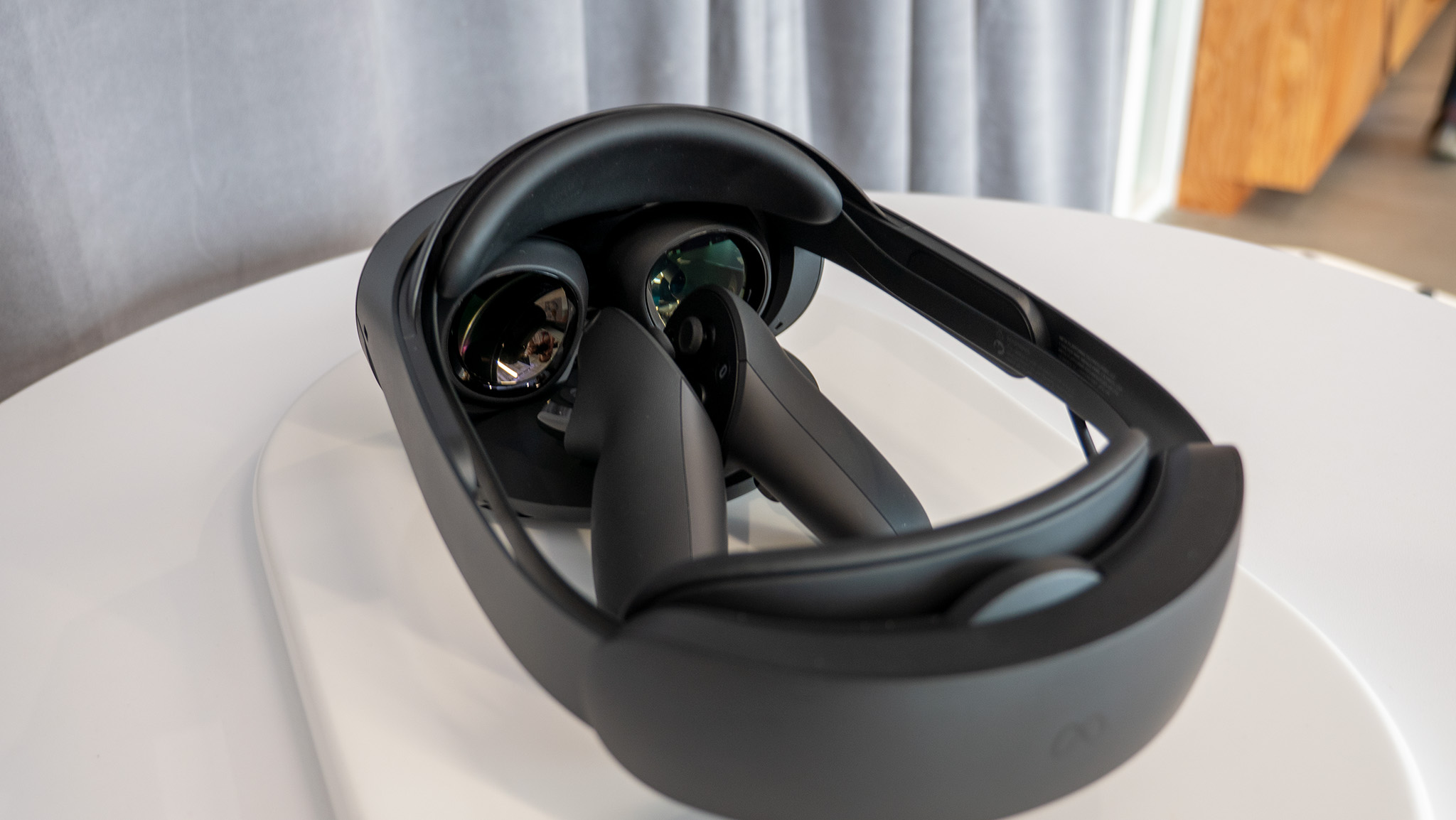
Both straps are adjustable using various knobs posted at different parts of each headset, but it's recommended that you go to an Apple Store to get fitted for a Vision Pro before pulling the trigger so that you don't have to, spend even more money on this already pricey headset. In fact, if you're interested in trying it out for yourself, our friends at iMore wrote a detailed article about how you can schedule an Apple Vision Pro demo for yourself.
Every element of the Vision Pro, from its aluminum-cased front screen to its soft fabric head strap, is made of high-quality materials and it shows. Boasting the premium feel you'd expect from an Apple Device, the Vision Pro's design makes it clear that this is a premium device.
On the other hand, the Quest Pro's design is much more minimalistic in comparison. It's smaller, monochromatic, and doesn't have the EyeSight feature, making it seem less like a futuristic gadget and more like a tool designed to increase productivity.
Apple Vision Pro vs Meta Quest Pro: Performance
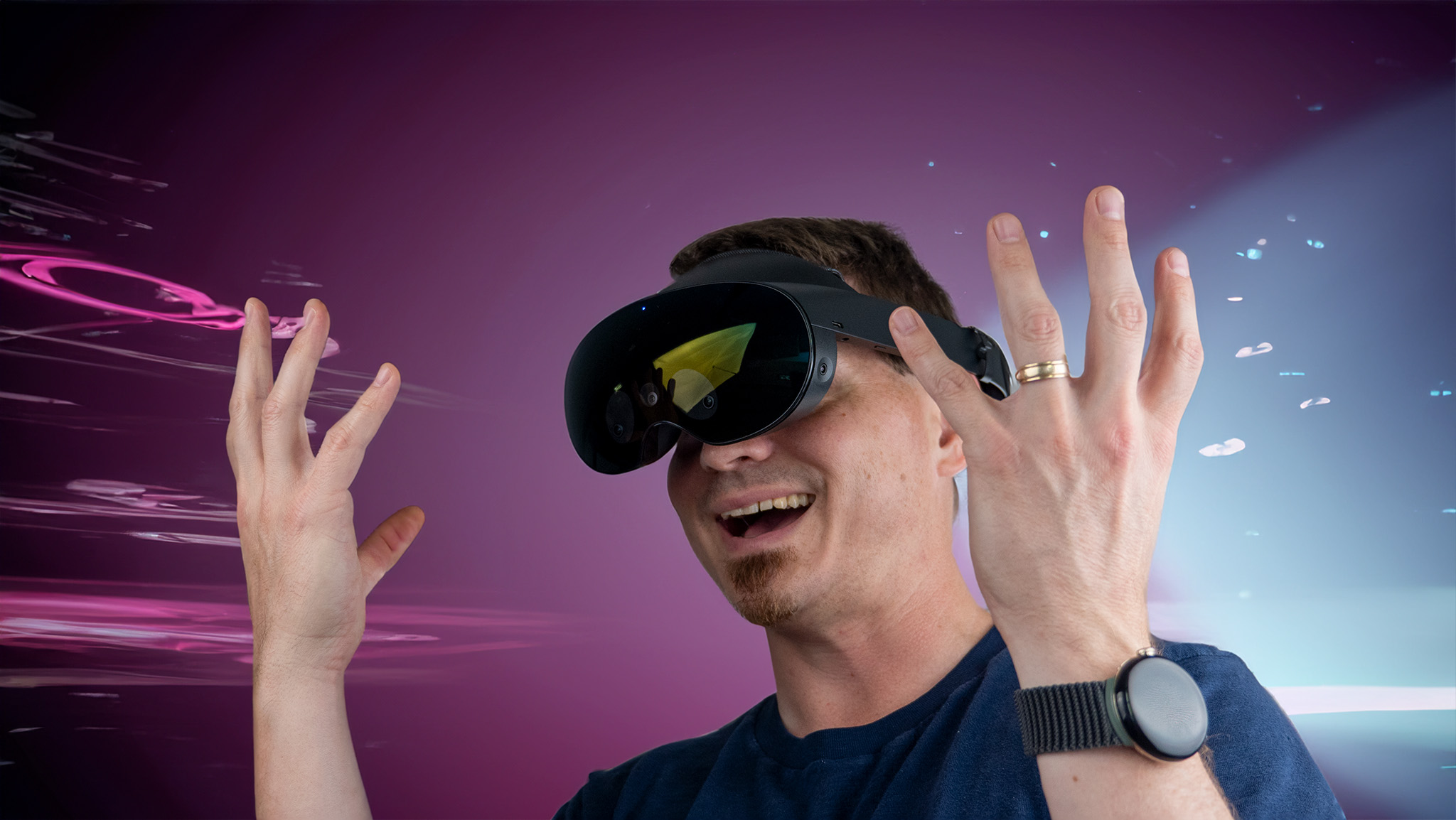
Here's where Vision Pro really shines. While its critics will decry its undeniably steep price point, you get what you pay for here. Vision Pro maps your environments without a second thought—a breath of fresh air compared to the painfully putzy process on Quest Pro.
You can also map out and resize multiple apps at a time in your environment, whereas the Quest Pro can only handle three apps at a time and none of them can be moved around or resized. Apple products are known for their seamless user experience and interface design and Vision Pro is no different in that regard, and its performance capabilities highlight that strength.
The main reason for this difference stems from each headset's respective processor. Apple uses a version of the M2 chip found in the MacBook Pro, along with a separate R1 chip for handling camera sensors. Meta's XR2+ Gen 1 chip has the equivalent power of a last-generation smartphone chip, with 4GB less memory and no co-processor. The Quest 3's XR2 Gen 2 chip actually surpassed it in speed about a year later.
The only notable leg up that the Quest Pro has in this conversation is that some users report that walking around a mapped space with the Vision Pro can lead to motion-blurring in some spots, which might just be the worst possible feeling for a mixed reality experience. The Quest Pro, on the other hand, offers a more consistent experience for walking around mapped-out spaces.
Quest Pro is still a strong device, but spatial computing takes a lot of power and while Meta's pro-level headset can do well enough in a vacuum, the Vision Pro's raw horsepower blows the Quest Pro out of the water.
Apple Vision Pro vs Meta Quest Pro: Specs, Displays, and Cameras

Vision Pro outclasses the Quest Pro in nearly every sector here. With a steeper price tag, it's a given that it has nicer components. Its build quality and premium aesthetic speak volumes to its status as a high-end product, but putting on the headset and looking at the Vision Pro's stunning displays will really hit that difference home.
The Apple Vision Pro has an advertised resolution of 23 million pixels or half that per eye. This iFixit teardown found it has a resolution of 3660 x 3200 pixels per eye, compared to 1800 x 1920 pixels per eye on the Quest Pro, which has nearly the same pixel density as the Quest 2; a nearly four-year-old device. Plus, Quest Pro's display just can't pull through with the same amount of color as Vision Pro.
Vision Pro is significantly stronger than the Quest Pro and makes strong use of every pixel. Vision Pro uses the M2 processor that debuted in Macs in 2022, while Quest Pro relies on the outdated Snapdragon XR2 Gen 1, which is based on a processor that debuted in 2019.
Apple Vision Pro vs Meta Quest Pro: Controllers
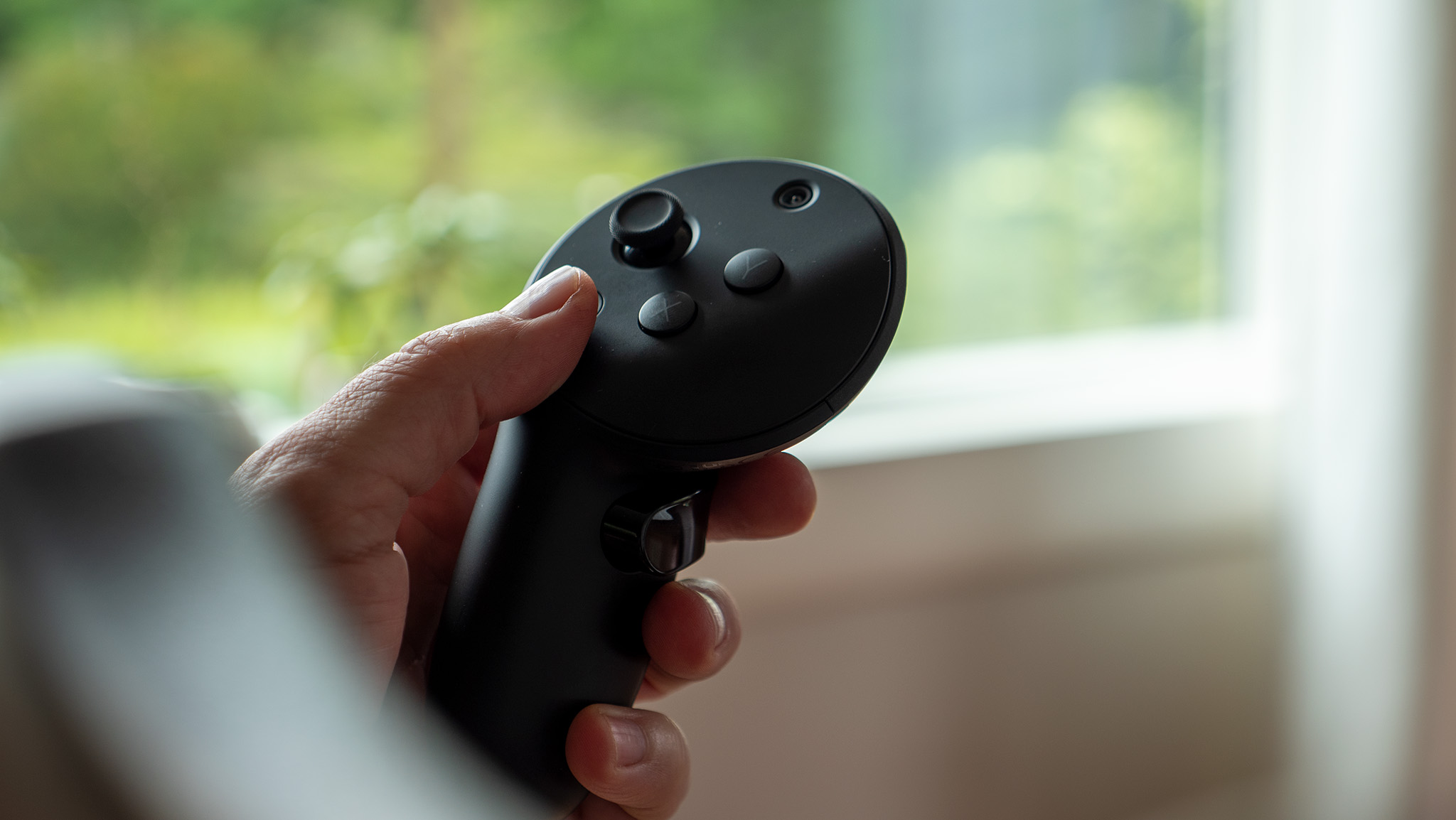
Apple Vision Pro doesn't come with controllers of any kind. Instead, you are the controller; this spatial computer has trackers for your hands and eyes meaning they're all you'll need to use the Vision Pro in most basic functions. However, you can connect bluetooth devices like keyboards and controllers, but most games currently available on Vision Pro all work just fine with hand tracking.
Just because it ships without controllers doesn't mean that the Vision Pro is an unintuitive piece of hardware, though. In their Apple Vision Pro review, iMore noted just how easy this headset is for newcomers to VR, saying, "For such a futuristic piece of tech, it's surprisingly intuitive. Picking up how to interact with it is almost instantaneous and that goes for the gestures too."
The Quest Pro does ship with controllers, though. And they're chock full of awesome tech; each controller has three cameras apiece, allowing for highly accurate controller-based tracking. These controllers are smarter and faster than those found with other Meta headsets thanks to the Qualcomm Snapdragon 662 processors found in each controller and have no dead zones. They're easily some of the most high-tech controllers you'll find in any consumer-facing XR headset and work exceptionally well.
Apple Vision Pro vs Meta Quest Pro: Games and software
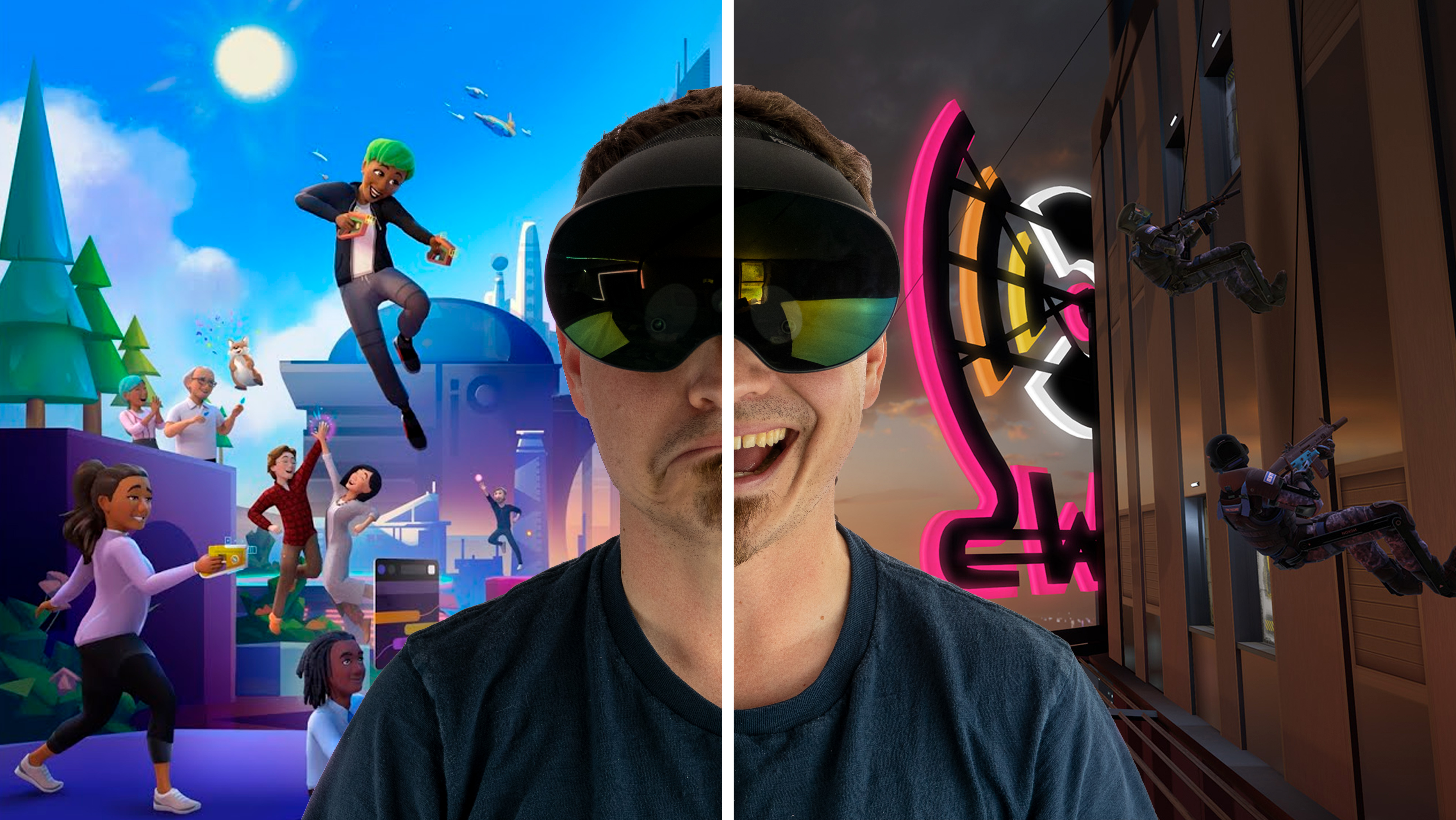
For gaming, the Meta Quest Pro wins in the quantity department. With half a decade's worth of Quest experiences and games available out of the box, you can play the Quest 2 version of nearly every Meta Quest game. And with improved passthrough and mixed reality experiences, the Quest Pro unlocks even better versions from chunks of games that feature MR sections, like Stranger Things VR.
Vision Pro does have a few games through Apple Arcade, but these are the same versions of the same games that you could play on any other non-VR Apple device. In other words, don't expect anything impressive on the gaming front from the Vision Pro. Instead, the Vision Pro is a spatial computer first and foremost; it's unlikely to be treated or supported the same way a standard VR headset would be.
Instead of a massive library, Vision Pro benefits from Apple's strong ecosystem of App Store apps. The Vision Pro slots nicely into the rest of Apple's suite of devices and communicates well with your iPhone, MacBook, iPad, and so on. Right now, its functionality is pretty limited as it's still a relatively new device, but there are plans to add more features as time goes on.
Both headsets feature the option to use a virtual display, which is inarguably the biggest productivity bonus that either has to offer. But where the Quest Pro works well with both Mac and PC devices, the Vision Pro is designed specifically for Macs and other Apple devices. While there are workarounds to get a virtual display from a PC working on Vision Pro, they're inconsistent and often not worth the trouble as they've been reported to come with dips in framerate or lag that can cause serious motion sickness.
The Quest Pro also has social features built into it to try and capture the feeling of working in an office. Vision Pro does have FaceTime, but it currently doesn't incorporate other digital avatars into a mixed-reality setting in the same way.
Apple Vision Pro vs Meta Quest Pro: Which should you buy?
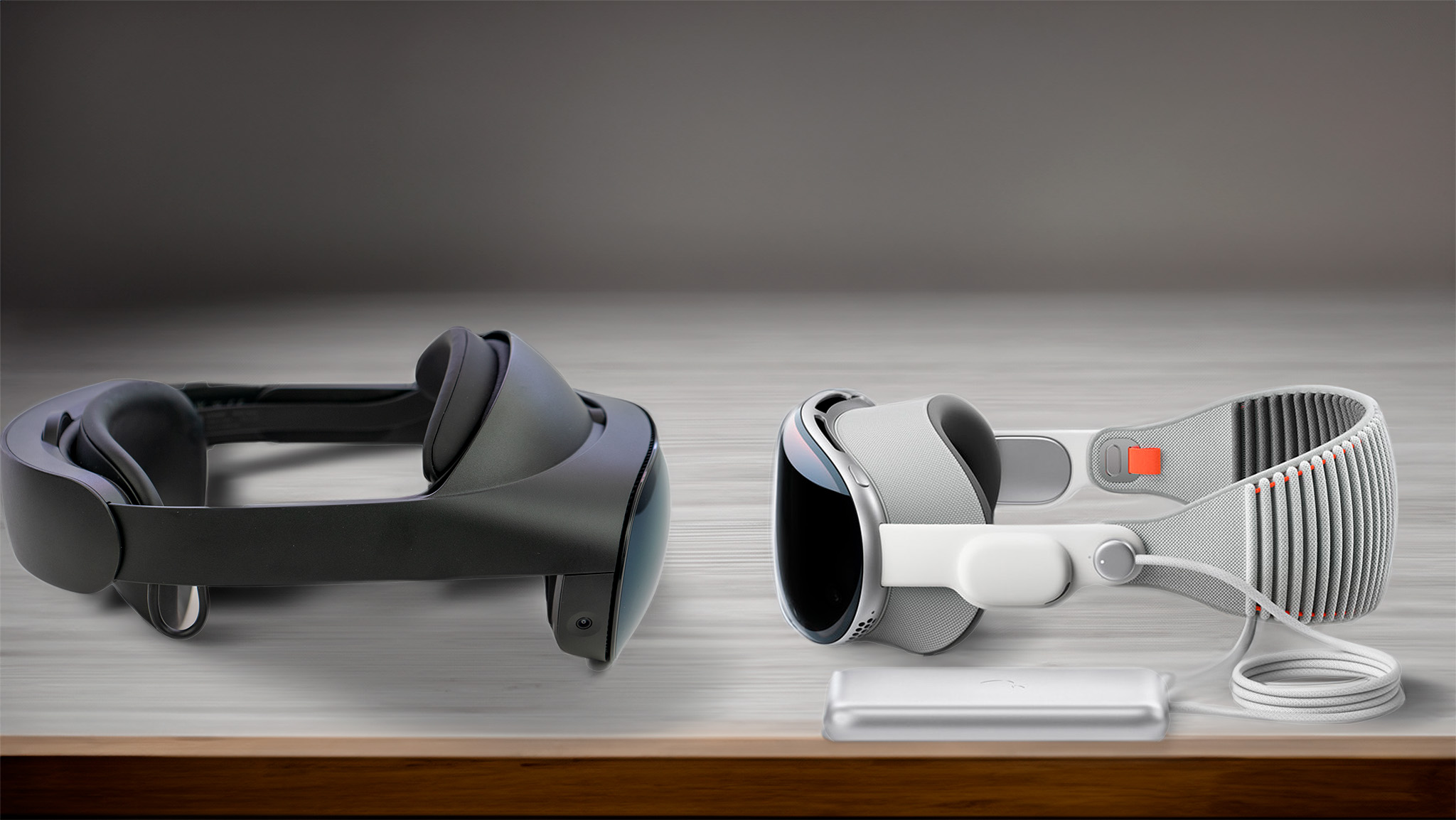
Buying either headset will require some compromise. While the Vision Pro is still in its infancy, Meta's all but abandoned the original Quest Pro as it prepares to release a successor. While you can still find and buy them at retail, it's a tough sell even compared to Meta's flagship, the Quest 3. If you're willing to wait until next year, we recommend sitting this one out until the Quest Pro 2 hits retailers.
Still, from where we're standing, it's much easier to recommend the Meta Quest Pro for most people if you want to get on the Pro-level VR train early. Both headsets are expensive, sure, but the Quest Pro is significantly cheaper than the Vision Pro. Plus, the Quest Pro has the benefit of years of previous Meta Quest and Oculus hardware and a massive library behind it, guaranteeing a much more reliable experience.
The Vision Pro may be a great device for the highest-end user to check out and experiment with, but it's a first draft. Early adopters will be in on the first floor, which has its benefits, but just isn't as easy to recommend as something that's tried and tested. Again, you may want to wait for the second iteration of the Vision Pro, which will allegedly be more affordable.
Still, the Vision Pro has its merits today, while the Quest Pro feels distinctly outdated. Apple's spatial computing capabilities are significantly more advanced than what you'd get with the Quest Pro.
You probably won't regret your purchase if you're the type who's able and willing to spend truckloads of cash on the latest gadget or if you're all-in on the Apple ecosystem. That ecosystem alone is a stellar selling point but on top of that, the Vision Pro has loads of cool exclusive features. Still, with a relatively niche user base and a significantly smaller library, this headset is years away from achieving its full potential, so proceed with caution.
Premium experience, premium price
The Apple Vision Pro feels like magic. But it's no secret that its greatest tricks come at a high price. If you have the disposable income and are in the market for an experimental, novel experience that hasn't been fully fleshed out or explored, you should absolutely check out the Vision Pro. Otherwise, we recommend waiting a few years to see how Apple's vision evolves.
High-Function, Low Profile
Meta Quest Pro is a solid first stab at a productivity-focused headset. While it doesn't have the same fidelity or gorgeous screen that Apple Vision Pro does, it has years' worth of experiences and software built in with the Quest ecosystem. Plus, it's lightweight and much cheaper than Vision Pro.







